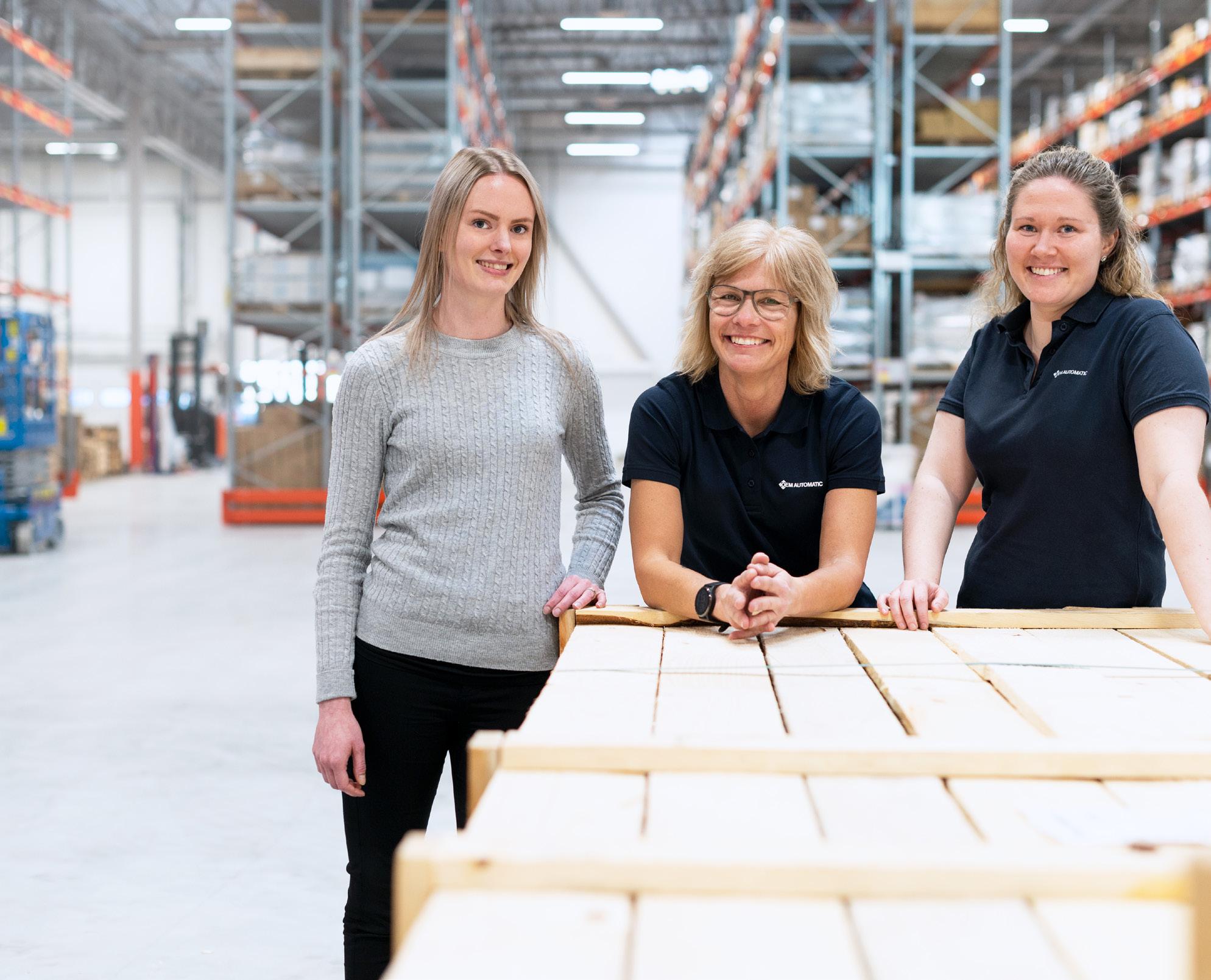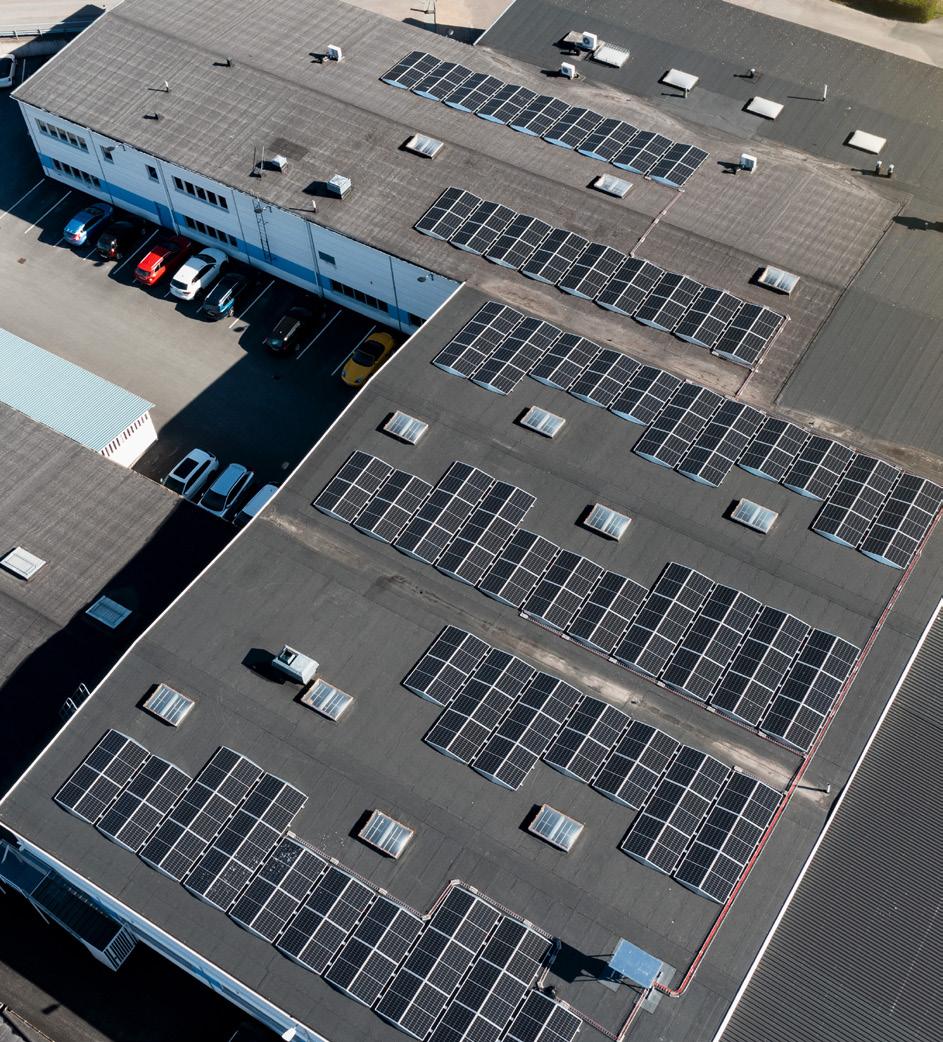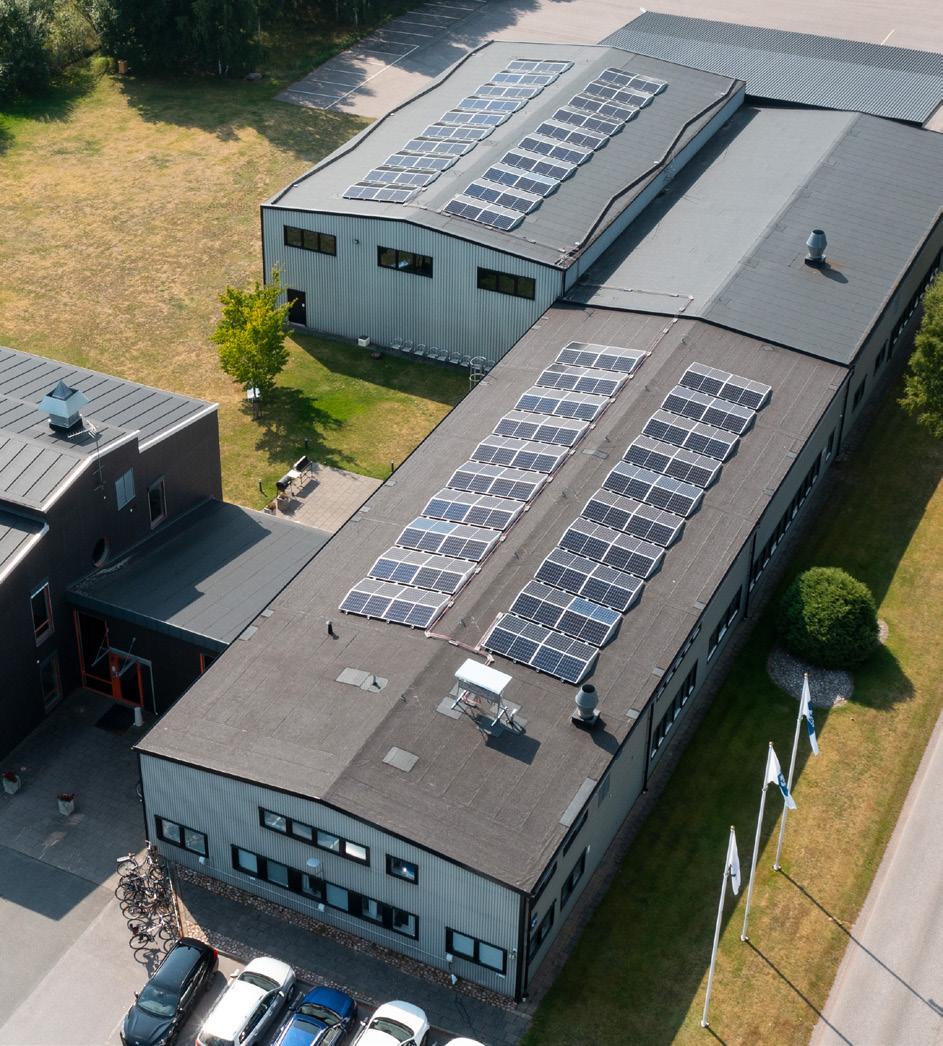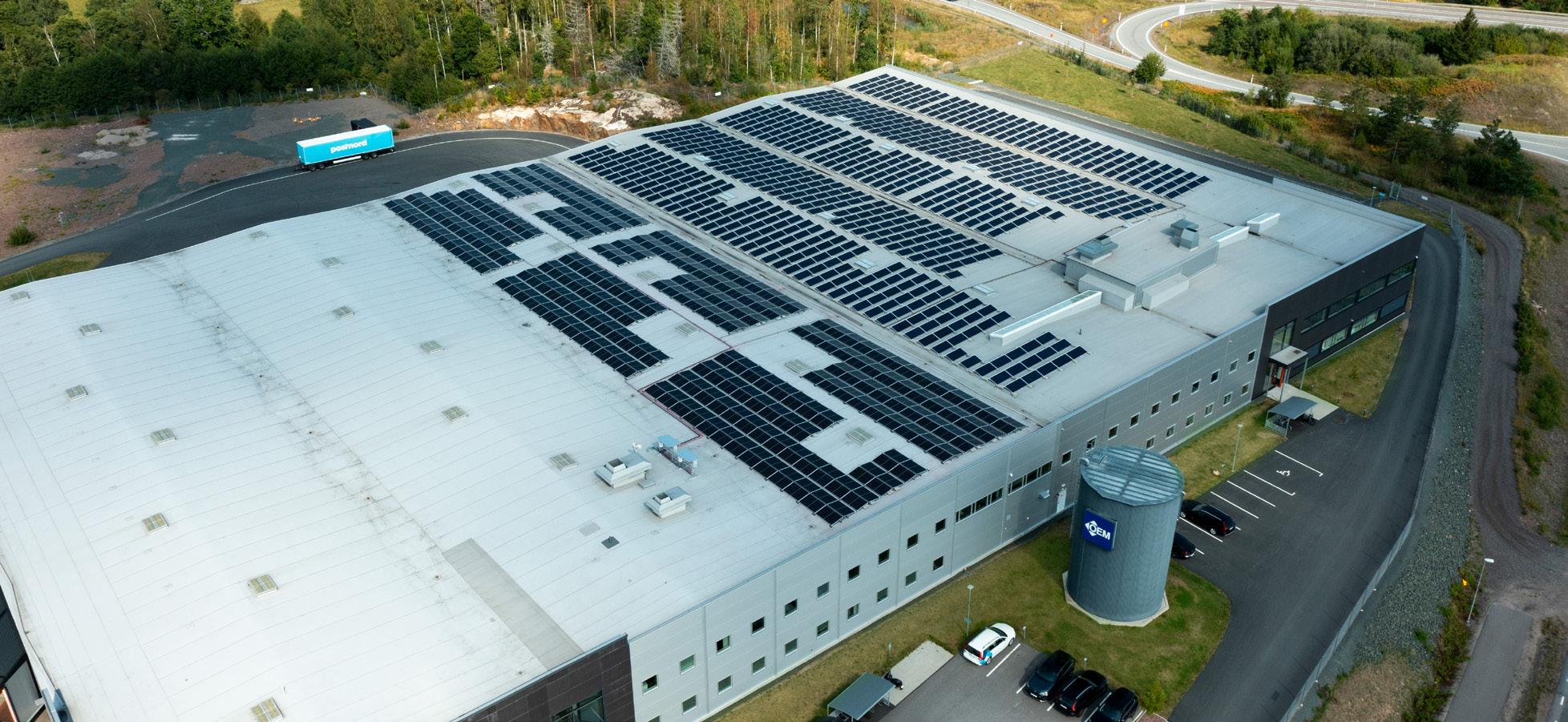
5 minute read
GOALS
Also Cover The Three Aspects Of Sustainability
Environmental responsibility – The environmental impact from the Group's product and passenger transport, heating of premises, and products and packaging materials.
Examples of risks: Purchase and sale of products that may contain environmentally hazardous substances, the use of environmentally hazardous packaging materials, transport of both products and passengers.
Economic and ethical responsibility – Financial stability and strength is essential for investment in sustainable business development. Ensure responsible business practices that represent human rights and oppose corruption.
Examples of risks: The business stops developing, which affects the financial stability and strength. Departure from the group’s Code of Conduct, which leads to breach of human rights in the business of the group or suppliers. Offer of, or acceptance of bribes or other form of undue payment with a view to induce someone to act in conflict with the prescribed undertakings.
Social responsibility – As a responsible employer, be able to offer employees skills development, a positive working environment, good health and safety, and oppose and prevent all forms of discrimination and harassment in the workplace.
Examples of risks: Working environment risks (that can put the lives and health of employees at risk). Every kind of discrimination, harassment, abuse or threats at the workplace. Other conditions that do not contribute to a safe and pleasant working environment for employees.
Environmental Responsibility
OEM encourages actions and initiatives that lead to greater environmental responsibility and preventative measures in order to give priority to environmentally friendly solutions. OEM has identified the transport of goods, travel, heating of premises and manufacturing and use of products as the areas having the greatest environmental impact. There has been a strong focus on these areas for many years and OEM strives to minimise the environmental impact as far as this is technically possible and environmentally motivated. It is also important to initiate and support the development initiative within these areas, work that is performed in close collaboration with the Group’s suppliers through product development and the creation of new products and suppliers.
Several of the businesses in the group are quality and environmentally assured in accordance with ISO 9001 and ISO 14001.

Products And Range
An important part of the sustainability agenda is to help customers make the right choices when it comes to components and solutions. OEM offers sustainable solutions through low-energy and high-efficiency products, reduced need for travel, smart products that help streamline production and enhance operations or simply contain fewer raw materials. Products with a long life, that can be repaired and are made of recyclable materials are a good fit for the circular economy. Working to provide the right sustainable solutions is both a positive step in the transition to a net-zero society and a competitive advantage that creates business opportunities.
The supplier assessments shall be used to evaluate the supplier’s and the products’ most significant environmental aspects and the quality performance of products. OEM attaches immense importance to always supply the components that function best in the customers’ applications, and can therefore, through customer knowledge and technical ability, also initiate developments towards more sustainable components. OEM also communicates information about sustainable products in its marketing communication materials and sales processes.
Logistics
The group’s logistics is to the very highest degree a sustainability factor. Consumption is reduced by optimising inventory levels and managing inventories efficiently. This improves product availability for customers and results in less lifting and handling for personnel. The businesses work continuously to optimise the ratio between incoming and outgoing deliveries so that the right quantity is purchased. This reduces both transports and the consumption of packaging materials. The environmental impacts of freight transport operators are monitored to enable the best transport options to be selected. OEM is also committed to reusing packaging materials as far as possible.
Real Estate
The group continues to work to reduce the environmental impact from its business properties and other premises. The objective is, from year to year, to find energy saving areas to reduce consumption. All of OEM’s properties in Tranås now have solar panels and more are being installed elsewhere. The solar panels fitted to the properties in Tranås in 2022 cover over 50% of annual electricity requirements. The plans are to continue installing solar panels on other properties owned by OEM in Sweden and abroad. In 2022, they produced 364 MWh.



During the warmer periods of the year, geothermal heating is used to cool the premises, which means there are no air conditioning systems consuming energy.
Company Cars
With a total of some 900 employees on several markets, the group also has a direct impact on the environment through the choice of company cars and carbon emissions from these. OEM has set the target to have a fossil fuel-free vehicle fleet by 2030. The objective is to achieve an annual reduction in carbon emissions through the choice of company cars and replacing traditional meetings with video meetings. The new working methods that have emerged during the pandemic have clearly shown that this is possible.
Greenhouse Gas Emissions In Accordance With The Ghg Protocol
OEM has the long-term goal of reducing greenhouse gas emissions. The reporting requirements of the GHG Protocol provide an important tool for measuring and monitoring emissions. Emissions are classified into 3 scopes. OEM’s current focus is on scopes 1 and 2, and also goods transport and business travel in scope 3. A pilot has been launched by OEM Automatic AB to work on more comprehensive reporting for scope 3. This reporting will then be implemented in stages through the rest of the organisation.
Scope 1: Direct greenhouse gas emissions over which the business has control.
Scope 2: Indirect greenhouse gas emissions from electricity, district heating, district cooling and steam.
Scope 3: Other indirect greenhouse gas emissions arising in the value chain.
Goods transport and business travel are the two areas that have the greatest impact on OEM’s emissions. Supply and delivery issues in 2022 have led to an increase in transportation of products by air. At the same time, more companies are engaging in activities to reduce the impact of freight operations. For example, switching to sustainable, bio-based fuels for cargo ships. During the pandemic, business travel was at a low level but has since increased. The results of the reporting are used as a strategic tool for the sustainability agenda and serve as the basis for further activities linked to the companies’ sustainable development goals.
Working to minimise its environmental impact by reducing carbon emissions is a fundamental part of OEM’s sustainable development strategy. To help it achieve its carbon emission goals, OEM sets targets and monitors and reduces emissions in line with the GHG Protocol. Examples of its environmental sustainability activities include an energy-saving programme and purchase of energy from 100% renewable sources by 2030. Transportation of goods is OEM’s largest contributor to greenhouse gas emissions. Measures are being taken to reduce this impact. For example, OEM Electronics AB purchases sustainable, bio-based fuels, produced from waste materials, via the GEODIS Sustainable Marine Fuel Insetting programme, for all of its sea freight. This has led to a reduction in carbon emissions and 100% reduction of sulphur emissions. More carbon is added to the carbon cycle every time fossil fuels are used. Sustainable fuels do not add more carbon to the carbon cycle. Combustion of sustainable fuels releases CO2 that is already a part of the natural carbon cycle, which results in a step towards net-zero emissions.
To compensate for carbon emissions through financial contributions the largest subsidiary in the group has calculated the impact from company cars and chosen to enter into a cooperation agreement with the Swedish fund-raising trust “Vi Agroforestry”.
Greater Focus On Sustainability
OEM has a strong and clear ambition to put greater focus on sustainability issues in the future by establishing clearer targets for the business, enabling it to take a more purposeful and hands-on approach within this area. OEM also has a number of overall activity goals aimed at increasing internal commitment and communicating information about OEM’s sustainability actions and initiatives and raising awareness of sustainability in general.






